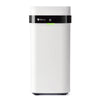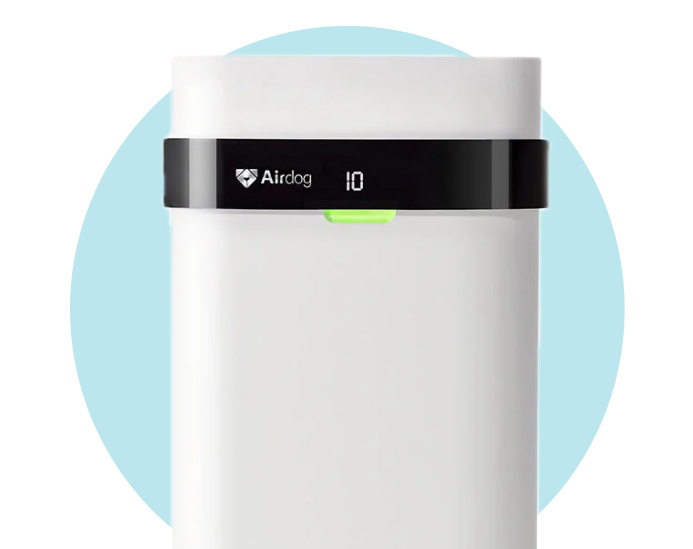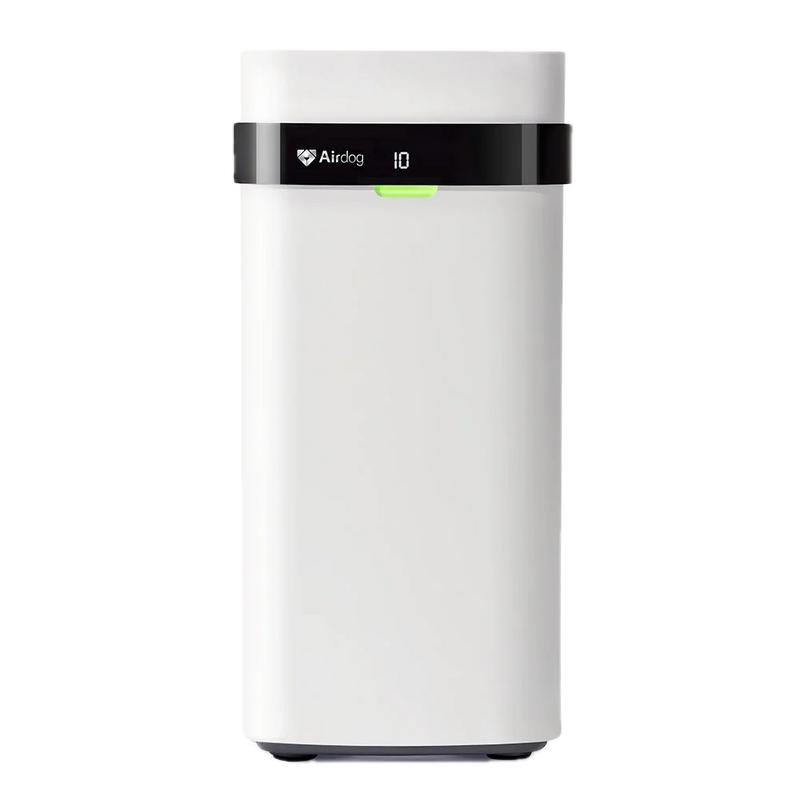Introduction
Have you ever walked into a room and felt an immediate need to open a window? That sensation often stems from an encounter with stale air—a common yet overlooked issue that affects many indoor environments. Studies have shown that indoor air quality significantly impacts our well-being, with stale air playing a not-so-insignificant role in this dynamic.
Understanding Stale Air: Characteristics and Health Impacts
Stale air, often perceived merely as air that lacks freshness, embodies a more complex challenge within indoor environments. Its characteristics and consequent health impacts necessitate a deeper understanding and awareness.
Scientific Definition of Stale Air
-
Lack of Circulation: Fundamental to the definition of stale air is its lack of circulation. This stagnation prevents the replenishment of indoor air with fresh outdoor air.
-
Accumulation of Pollutants: Stale air acts as a repository for pollutants, including volatile organic compounds (VOCs), dust, and mold spores, which accumulate over time due to inadequate ventilation.
-
High Levels of Carbon Dioxide: Exacerbated by breathing and lack of fresh air exchange, elevated carbon dioxide levels are a hallmark of stale air, reducing the oxygen available for inhalation and impairing cognitive function.
Health Implications of Long-term Exposure
Respiratory Issues: Regular exposure to stale air can inflame the respiratory tract, leading to chronic respiratory conditions. Symptoms may include coughing, wheezing, and shortness of breath.
Allergies: The pollutants harbored in stale air can trigger allergic reactions. Individuals may experience heightened symptoms such as sneezing, congestion, and itchy eyes.
Potential Sickness: IAQ.Works highlights the role of stale air in promoting the spread of airborne illnesses. The concentration of pathogens can increase in stagnant indoor environments, elevating the risk of sickness among occupants.
Solidifying the Link Between Stale Air and Health Risks
Research and reports from reputable health organizations have underscored the link between stale air and various health risks. Key findings include:
-
Increased Asthma and Allergy Prevalence: Studies have shown a direct correlation between poor indoor air quality, exacerbated by stale air, and the prevalence of asthma and allergy symptoms.
-
Cognitive Impairment: Elevated carbon dioxide levels, a characteristic of stale air, have been linked to decreased cognitive function in multiple research studies.
-
Overall Well-Being: The cumulative effect of exposure to stale air impacts more than just physical health; it can also affect mental health, productivity, and general well-being.
Addressing the quality of air in indoor spaces isn’t just a matter of comfort but as a crucial component of health and safety. The evidence is clear: taking steps to mitigate stale air not only enhances the freshness of our environments but also safeguards our health.
Identifying the Causes of Stale Air in Your Home
The quest for a pristine indoor environment requires an understanding of what compromises it in the first place. Stale air in your home, a silent adversary, often results from a myriad of sources that, when not addressed, can deteriorate the air quality and, by extension, your health and well-being.
Inadequate Ventilation: The Prime Culprit
-
Lack of Fresh Air Exchange: The most direct cause of stale air is inadequate ventilation. Modern homes are built to be energy-efficient, sealing in heat and cooling but, inadvertently, also sealing in pollutants.
-
Mechanical Ventilation Systems: Insights from Heat-On suggest that integrating mechanical ventilation systems can significantly mitigate the risk of stale air by ensuring a continuous exchange of indoor with outdoor air.
High Occupancy and Indoor Pollutants
-
Elevated Carbon Dioxide Levels: Each person exhales carbon dioxide. High occupancy levels can lead to an accumulation of CO2, contributing to the staleness of air.
-
Volatile Organic Compounds (VOCs): Common household items—from paints to cleaning supplies—emit VOCs, which linger in the air without adequate ventilation.
-
Dust and Mold: These allergens thrive in stagnant air environments, further contributing to the problem.
Everyday Activities Contributing to Air Stagnation
-
Cooking: Gas stoves release combustion by-products, including carbon monoxide and nitrogen dioxide, into the indoor environment.
-
Cleaning: Many cleaning agents release VOCs that, without proper ventilation, can accumulate in the indoor air.
-
Heating Systems: Certain types of heating systems can contribute to indoor air pollution, particularly if they are not properly maintained.
The Role of Modern Home Design
-
Energy Efficiency vs. Air Quality: Efforts to make homes more energy-efficient often result in tighter seals, trapping stale air inside.
-
Ventilation Oversights: While insulation is crucial for energy conservation, it often comes at the expense of ventilation, underscoring the need for mechanical ventilation solutions to ensure healthy indoor air quality.
The interplay between modern home design, everyday activities, and the inherent characteristics of indoor environments creates a complex puzzle. Solving it requires not just awareness but proactive measures to ensure that the air we breathe indoors remains as fresh and healthful as possible.
Practical Steps to Eliminate Stale Air
Embrace Natural Ventilation Practices
Encouraging the circulation of fresh air inside your home plays a pivotal role in dispelling the staleness that can accumulate over time. This process not only refreshes the air but also dilutes indoor pollutants.
-
Open Windows Strategically: Whenever weather permits, open windows across different rooms to create a cross breeze that naturally exchanges stale indoor air with fresh outdoor air.
-
Use Fans to Enhance Circulation: Ceiling and window fans can complement open windows by propelling air throughout your home, ensuring that fresh air reaches even the most secluded corners. There’s a dual benefit of using fans: they enhance air circulation and, when used in concert with air conditioning, can reduce energy consumption by allowing for higher thermostat settings without a loss of comfort. Airdog’s Smart Circulating Fan uses unique technology to move air throughout a room more effectively than the majority of fans on the market.
Install Mechanical Ventilation Systems
In regions where outdoor air quality is compromised or during extreme weather conditions, natural ventilation might not be practical. This is where mechanical ventilation systems come into play.
-
Heat-On Ventilation Solutions: Opt for mechanical ventilation systems like those offered by Heat-On, which are designed to remove stale air from your home while simultaneously drawing in fresh air from outside. These systems are particularly beneficial for tightly sealed homes, where natural ventilation is insufficient.
-
Benefits of Mechanical Ventilation: Such systems not only ensure a constant supply of fresh air but also improve overall air quality by reducing humidity levels, thereby mitigating the risk of mold and dust mites. This is especially important for individuals with allergies or respiratory conditions.
Prioritize Air Purification
Integrating air purifiers into your home's air quality strategy can significantly reduce the concentration of airborne pollutants.
-
Air Purifiers: Devices that filter the air within a room play a crucial role in capturing dust, pollen, and other airborne particles. Certain air purifiers are effective in controlling odors and trapping particles that contribute to stale air, such as mold spores and smoke. Airdog’s TPA Technology, used in all of its air purifiers, have the ability to capture and destroy harmful air particulates as small as 0.0146 microns (20x smaller than the typical HEPA filter), capturing harmful viruses like influenza, rhinovirus, smog and other ultrafine particulates that HEPA filters cannot reliably capture.
-
Placement of Air Purifiers: For maximum efficiency, place air purifiers in high-traffic areas or rooms where pollutants are most likely to accumulate, such as kitchens, living rooms, and bedrooms.
Commit to Regular Home Maintenance
Regular upkeep of your home's ventilation, heating, and air conditioning systems is essential for preventing air stagnation.
-
Clean Air Ducts: Over time, air ducts can accumulate dust and debris, which not only contributes to poor air quality but also impedes the efficiency of your HVAC system. Scheduling regular duct cleaning sessions helps maintain optimal air circulation and quality.
-
Replace HVAC Filters: Regularly changing the filters in your HVAC system is a simple yet effective way to combat stale air. Filters trap dust, pollen, and other particulates, preventing them from circulating through your home. Following the manufacturer's guidelines for filter replacement ensures that your system operates efficiently, providing you with cleaner air.
By adopting these practical steps, you can significantly improve the air quality in your home, transforming it into a fresher, healthier living environment. Whether through natural methods like opening windows and using fans, or by investing in mechanical ventilation systems and air purifiers, each strategy plays a crucial role in ensuring the continuous circulation of clean air. Regular maintenance tasks like cleaning air ducts and replacing HVAC filters further contribute to the elimination of stale air, safeguarding the well-being of your family.
Advanced Solutions for Stale Air: Ventilation Technologies
Heat Recovery Ventilation Systems (HRV and ERV)
Addressing stale air requires more than just occasional ventilation; it demands a systematic approach to continuously renew and purify the air within indoor spaces. Heat Recovery Ventilation (HRV) and Energy Recovery Ventilation (ERV) systems represent the forefront of combating stale air with advanced technology.
-
HRV Systems: HRV units are adept at transferring heat from outgoing stale air to incoming fresh air during colder months, ensuring that warmth is not wasted but reused to heat new, clean air. Heat-On's offerings in this category exemplify the balance between energy efficiency and air quality enhancement, as they minimize heat loss while replacing stale air with fresh outdoor air.
-
ERV Systems: Similar to HRVs, ERVs also transfer moisture along with heat, making them particularly useful in areas with extreme climates—either too humid or too dry. By managing the humidity levels of incoming air, ERVs contribute to a more comfortable indoor environment without compromising on air quality.
Benefits of HRV and ERV Systems:
- Energy Efficiency: Both HRV and ERV systems recoup energy from the extracted air, leading to significant savings on heating and cooling costs. Heat-On's systems, for example, are designed to recover up to 85% of the heat from outgoing air, which not only conserves energy but also reduces utility bills.
- Improved Air Quality: By continuously cycling stale indoor air with filtered, fresh outdoor air, these systems ensure a consistent supply of clean air, significantly reducing the concentration of indoor pollutants and allergens.
- Humidity Control: Especially with ERVs, the ability to transfer moisture ensures that indoor humidity levels remain balanced, which is crucial for comfort, health, and the preservation of building materials.
Additional Methods for Creating a Healthy Indoor Environment
Creating a wholesome indoor environment extends far beyond simply purifying the air. It involves a comprehensive approach that considers humidity control, the natural air-purifying benefits of indoor plants, and the selection of cleaning products that don't contribute to indoor air pollution.
Humidity Control
Managing indoor humidity levels is crucial for maintaining a comfortable and healthful environment. Too much humidity can foster the growth of mold and dust mites, while too little can lead to dry skin and respiratory problems.
-
Use dehumidifiers in areas prone to moisture, such as basements and bathrooms, to keep humidity levels in check.
-
Ventilate your home adequately, especially during activities that generate a lot of moisture, like cooking or showering. This is where products like Optimum Window's steel windows, which are designed for both superior ventilation and energy efficiency, can significantly contribute.
-
Monitor humidity levels with a hygrometer to ensure they remain within the recommended range of 30% to 50%.
Natural Air Purification with Indoor Plants
Indoor plants do more than beautify our homes; they're natural air purifiers, absorbing carbon dioxide and releasing oxygen. Additionally, plants can remove toxins from the air, making them a valuable addition to any indoor space.
-
Spider plants are effective at removing formaldehyde and xylene.
-
Snake plants, known for their ability to emit oxygen at night, are perfect for bedrooms.
-
Peace lilies can help reduce levels of benzene, ammonia, and formaldehyde.
Incorporating a variety of these plants throughout your home can enhance air quality naturally, contributing to a fresher, cleaner indoor environment.
Selecting the Right Cleaning Products
The cleaning products we choose play a significant role in indoor air quality. Many conventional products contain volatile organic compounds (VOCs) that can contribute to stale air and health issues.
-
Opt for products labeled "low-VOC" or "VOC-free" to minimize exposure to harmful chemicals.
-
Consider natural alternatives, such as vinegar and baking soda, which can be just as effective for many cleaning tasks without the added chemicals.
-
Read labels carefully to avoid products with known irritants or allergens, particularly if you have sensitive individuals in your household.
Lifestyle Changes for Reducing Indoor Pollutants
Last but not least, lifestyle changes can significantly impact the quality of air in our homes:
-
Select eco-friendly building materials and furnishings that don't have off-gas chemicals. Look for products made from natural materials like bamboo, wool, or cotton.
-
Maintain a smoke-free environment to ensure that indoor air remains clean and healthy for all occupants.
-
Regular maintenance of HVAC systems and replacing filters as needed can prevent the recirculation of dust and other pollutants.
By integrating these strategies into our daily lives, we not only improve the air quality within our homes but also contribute to a healthier planet.
The Imperative of Addressing Stale Air for Healthier Living
In the journey towards a healthier indoor environment, understanding and combating the presence of stale air is not just beneficial—it's essential. Stale air, characterized by its lack of circulation, accumulation of pollutants, and high CO2 levels, poses significant health risks. It's a silent detriment to our well-being, contributing to respiratory issues, allergies, and a general decline in health quality. Recognizing, addressing, and preventing the stagnation of indoor air should be a priority for every household. Let's delve into the critical steps and lifestyle adjustments necessary for fostering fresher, healthier indoor spaces.
Recognizing the Signs of Stale Air
Identifying the presence of stale air in your home is the first step towards improvement. Look for:
-
Persistent odors: Lingering smells from cooking, pets, or mustiness can indicate inadequate air circulation.
-
Increased allergy symptoms: A spike in allergies or respiratory issues could be due to trapped pollutants.
-
Humidity issues: Excessive dampness or dryness can signal poor air exchange.
Immediate Actions for Air Quality Improvement
Taking swift action can significantly enhance your indoor air quality:
-
Increase natural ventilation: Open windows regularly to allow fresh air exchange, especially during dry, pleasant weather.
-
Use exhaust fans: In areas like the kitchen and bathroom, exhaust fans can help remove contaminants and moisture directly from their source.
-
Introduce air-purifying plants: Incorporate plants such as spider plants and snake plants that naturally purify the air by absorbing toxins.
Commitment to Long-term Solutions
For sustained air quality, consider more permanent solutions:
-
Invest in mechanical ventilation: Systems like HRV (Heat Recovery Ventilators) or ERV (Energy Recovery Ventilators) provide continuous fresh air exchange without losing heat, making them ideal for colder climates.
-
Regular maintenance of HVAC systems: Ensure that air filters are replaced and ducts are cleaned regularly to prevent the recirculation of dust and pollutants.
-
Adopt humidity control measures: Use dehumidifiers or humidifiers to maintain an optimal indoor humidity level, reducing the risk of mold and mildew growth.
Lifestyle Adjustments for Reducing Indoor Pollutants
Adopting a few lifestyle changes can significantly reduce the production of indoor pollutants:
-
Opt for eco-friendly cleaning products: Reduce the use of harsh chemicals that can contribute to indoor air pollution.
-
Implement a no-smoking policy: Protect indoor air quality by prohibiting smoking inside the home.
-
Be mindful of material choices: Choose building materials, furniture, and decor that do not emit harmful VOCs.
Encouraging Proactivity in Indoor Air Management
By being proactive, you can create a healthier indoor environment for yourself and your loved ones. Regularly assess your home for signs of stale air and take decisive steps to address these issues. Remember, a commitment to maintaining clean indoor air is a commitment to your health and well-being.





